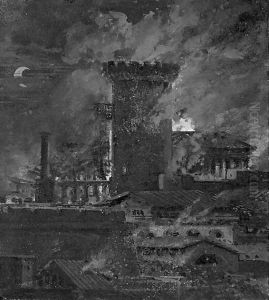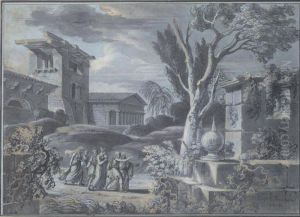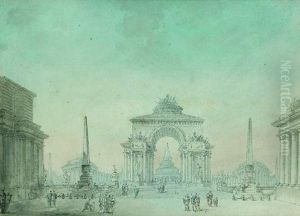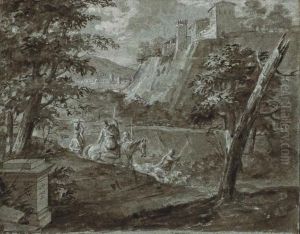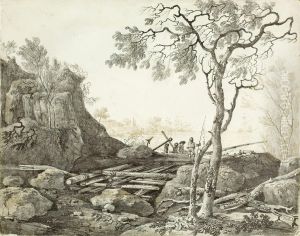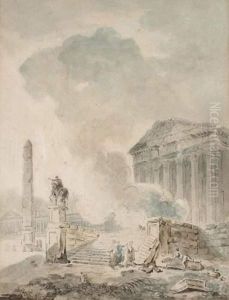Thomas De Thomon Paintings
Jean-François Thomas de Thomon, commonly known as Thomas de Thomon, was a neoclassical architect of French origin whose most significant work was done in Russia during the late 18th and early 19th centuries. Born on October 23, 1760, in Tournai, which was then part of the Austrian Netherlands (now Belgium), Thomas de Thomon embarked on a journey that would see him contributing to the architectural landscape of an era marked by the Enlightenment and the subsequent neoclassical movement that swept through Europe, influencing art, architecture, and culture.
After studying at the Academy of Fine Arts in Paris, Thomon found himself deeply influenced by the classical ideals of antiquity, which would later be reflected in his works. His career took a pivotal turn when he decided to move to Russia, a country undergoing rapid Westernization and architectural transformation under the reign of Catherine the Great and her successors. Thomon arrived in Russia in the late 18th century, where his expertise in neoclassical architecture was both needed and appreciated.
In Russia, Thomas de Thomon’s architectural genius came to life through several landmark projects. Among his most notable works was the design of the Stock Exchange and Naval Ministry building in Saint Petersburg, situated on the Vasilievsky Island. Completed in 1810, this building is a prime example of Russian neoclassicism, showcasing Thomon's ability to blend grandeur with functionality. Another significant contribution was his involvement in the planning and construction of the Spit of Vasilievsky Island, which became one of the most emblematic views of Saint Petersburg, reflecting the city's ambition to serve as a window to Europe.
Thomon's style was characterized by its grandiose scale, symmetry, and the use of classical elements such as columns, pediments, and friezes, which he masterfully incorporated into his designs to evoke the grandeur of ancient Greece and Rome. His works contributed significantly to the architectural identity of Saint Petersburg, aligning with the city's vision of becoming a cultural and architectural beacon in Europe.
Unfortunately, Thomas de Thomon's career was cut short by his untimely death on September 2, 1813, in Saint Petersburg, Russia. Despite his relatively brief period of activity, Thomon left a lasting legacy in the form of his architectural works, which continue to be celebrated for their beauty, innovation, and historical significance. His contribution to the neoclassical movement, especially in Russia, remains a testament to his talent and vision, securing his place among the notable architects of his time.
